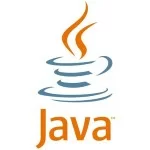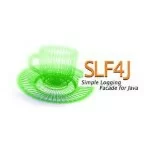Using HA Singleton in JBoss 7
Some time ago I had to change standard clustering behavior of Quartz Scheduler, and let it work without synchronizing over database. There are of course a lot of options to do that, but because I’m big fan of simplicity I’ve decided to use standard Spring @Scheduled configuration and totally skip thinking about cluster at this level. The idea was to just invoke “check that I’m on master node” method at the beginning of the scheduled method. The only problem was how to write such method. The choice was to use JBoss HA Singleton functionality. It’s available in JBoss 7.x but the big lack of documentation forces some experiments… nice!
First thing which we need to do is to provide proper dependency, containing few important classes. Of course remember about right version (here I’m using 7.1.1.Final because it’s available in public repositories and all next versions of 7 needs to be build manually).
1 2 3 4 5 6 | <dependency> <groupid>org.jboss.as</groupid> <artifactid>jboss-as-clustering-singleton</artifactid> <version>7.1.1.Final</version> <scope>provided</scope></dependency> |
Now it’s time to do some coding! Let’s start from class containing service that will be installed into application server. Its role is to set master status flag and expose it by simple static method.
package com.stackholder.jboss.ha;
01 02 03 04 05 06 07 08 09 10 11 12 13 14 15 16 17 18 19 20 21 22 23 24 25 26 27 28 29 30 31 | import org.jboss.msc.service.*;import org.slf4j.Logger;import org.slf4j.LoggerFactory;import java.io.Serializable;import java.util.concurrent.atomic.AtomicBoolean;public class MasterStatusHaSingleton extends AbstractService<Serializable> { private static final Logger LOGGER = LoggerFactory.getLogger(MasterStatusHaSingleton.class); private static AtomicBoolean masterStatus = new AtomicBoolean(false); @Override public void start(StartContext startContext) { LOGGER.info("MasterStatusHaSingleton started"); masterStatus.set(true); } @Override public void stop(StopContext stopContext) { LOGGER.info("MasterStatusHaSingleton stopped"); masterStatus.set(false); } public static boolean isMaster() { return masterStatus.get(); }} |
Now we need to write class that will install prepared service into container.
01 02 03 04 05 06 07 08 09 10 11 12 13 14 15 16 17 18 19 20 21 22 23 24 25 26 27 28 29 30 | package com.stackholder.jboss.ha;import org.jboss.as.clustering.singleton.SingletonService;import org.jboss.msc.service.*;import org.slf4j.Logger;import org.slf4j.LoggerFactory;public class HaSingletonActivator implements ServiceActivator { private final static Logger LOGGER = LoggerFactory.getLogger(HaSingletonActivator.class); public static final ServiceName SINGLETON_SERVICE_NAME = ServiceName.JBOSS.append("ha", "singleton"); @Override public void activate(ServiceActivatorContext context) throws ServiceRegistryException { LOGGER.info("HaSingletonActivator will be installed"); MasterStatusHaSingleton srv = new MasterStatusHaSingleton(); SingletonService singleton = new SingletonService(srv, SINGLETON_SERVICE_NAME); singleton.build(new DelegatingServiceContainer( context.getServiceTarget(),context.getServiceRegistry())) .setInitialMode(ServiceController.Mode.ACTIVE).install(); LOGGER.info("HaSingletonActivator installation SUCCESSFUL"); }} |
Remember that JBoss 7 is using OSGi, so we’ve to tell application server what modules we’re going to use in our application. The easiest way to do that is to add configuration into war or jar plugin:
01 02 03 04 05 06 07 08 09 10 | <configuration> <archive> <manifestentries> <dependencies> org.jboss.msc,org.jboss.as.server, org.jboss.as.clustering.singleton </dependencies> </manifestentries> </archive></configuration> |
Great – almost finished! Almost. Last thing we have to do is to activate proper modules in JBoss configuration. Just edit standalone-full-ha.xml file (or other configuration that you use of course) and add following modules into ee subsystem:
1 2 3 4 5 6 | <subsystem xmlns="urn:jboss:domain:ee:1.0"> <global-modules> <module name="org.jboss.msc" slot="main"> <module name="org.jboss.as.clustering.singleton" slot="main"> </global-modules></subsystem> |
And finally you can execute your server and enjoy new, cool functionality.






Nice tutorial, thanks. I have been looking for something like this for a long time now.
How did you manage to start your Spring based @Scheduled annotation only on the Master Node?
Hi,
I decided to choose simpler way (following KISS rule) and at the begging of the @Scheduled method I’m checking if it’s started on master and only then continue execution.
Kind regards,
Kuba